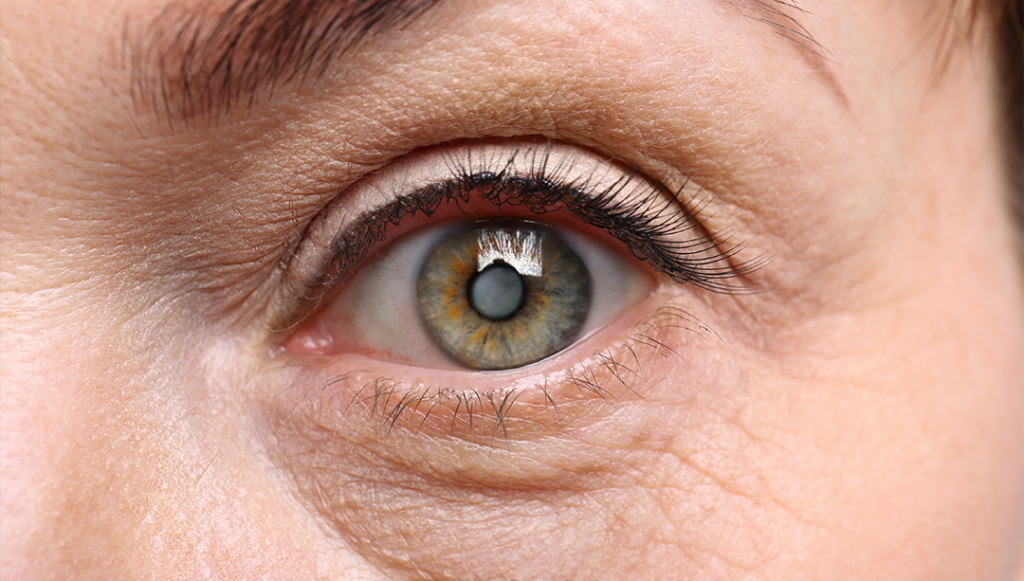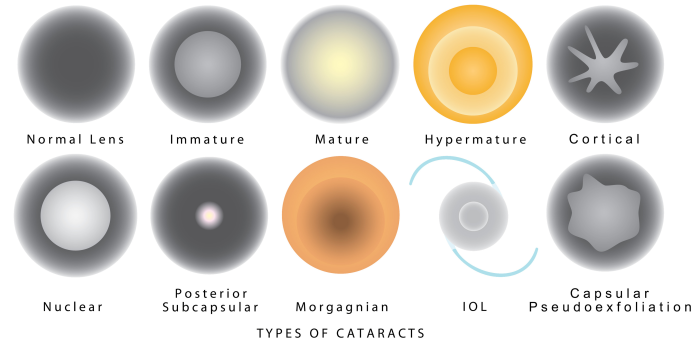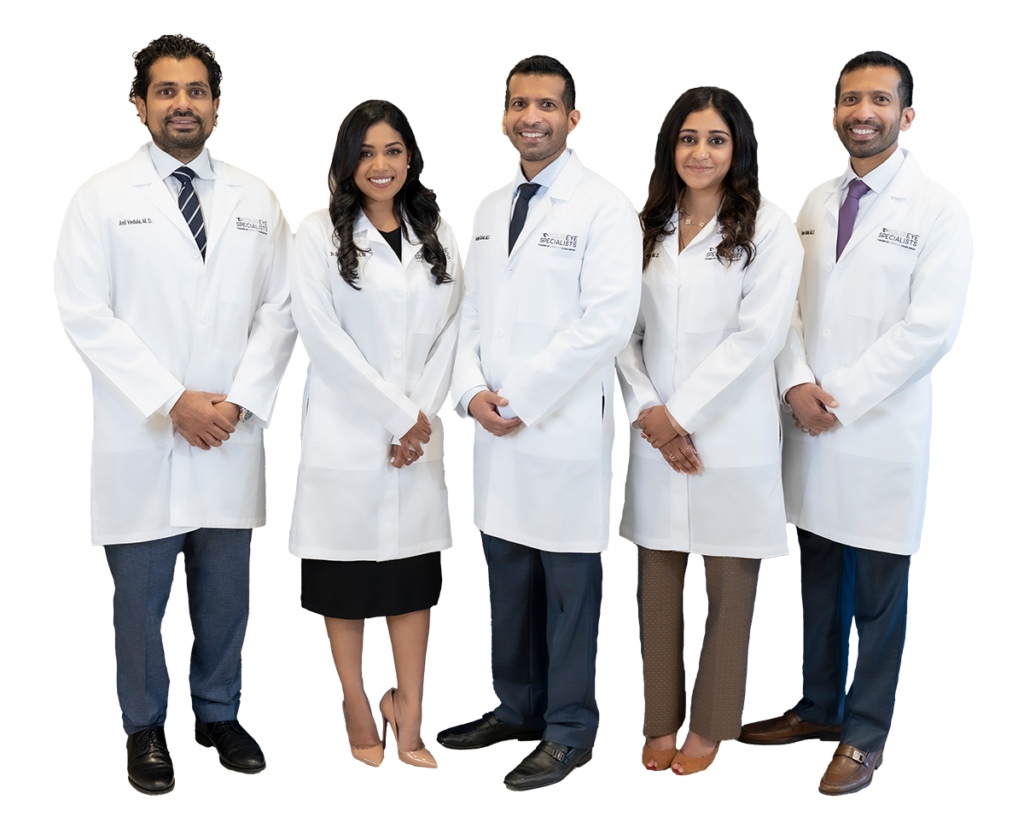Cataracts
Within the North Miami community, we at Your Eye Specialists are your laser cataract center. We have both the knowledge and skill set to not only inform you on what exactly cataracts are but also to clarify what happens during a laser cataract surgery.
Cataracts diminish the ability of light to pass through the eyeball to the retina due to a clumping of protein in the eye, causing the cloudiness, which comes from aging.

Say YES to South Florida’s Top 24/7 Laser Cataract Center
If you’re experiencing any of the above symptoms or causes of cataracts, we suggest that it is better to play it safe than sorry. You can easily contact us online to schedule your appointment.
What Are Cataracts?
When a patient experiences cataracts, he or she is experiencing the clouding of lenses that happens gradually and slowly. This can eventually lead to an inability to do normal, everyday tasks like driving or sports. It is not uncommon as men and women get older. Cataracts form in either eye – or both together – and at differing rates. There is no real predictable timetable.
Again, we stress this is gradual, and you may not notice it until your vision is markedly blurry. If you have any concerns, don’t hesitate to contact us to schedule a visit.
As your advanced center on cataract education, and laser cataract treatment, we help patients identify cataracts. Some causes include:
- Aging
- Prior eye injury
- Genetics
- UV rays
- Medicinal side effects
- Diabetes
- Tobacco use
- Metabolism imbalances
- Glaucoma
Knowing that these causes may exist for you, you might consider then looking for the following symptoms:
- Decreased vision over time
- Double or blurry vision
- Bright lights are emitting “halos”
- Diminished vision in sunlight
- Hard time distinguishing color
- Lacking depth perception
- Difficulty reading
- Changing of your glasses or lenses prescription happening more frequently
Are you experiencing any of these symptoms? Come to our facility for accurate cataract testing.
Finally, it may be time to diagnose your cataracts; this can be done with a contrast sensitivity test. This test assesses how much of your eyesight has been negatively affected by cataracts. Should cataracts be diagnosed, you should start to consider treatment right away.
No medical treatment will reverse or prevent cataracts from developing. However, cataract surgery is the solution. This procedure, done at the YES Laser Cataract Center in North Miami, is an outpatient procedure that takes less than 15 minutes. This method, called a phacoemulsification, allows the patient to go home the same day.
First, the eye is numbed with anesthetic eye drops. Following that, an incision is made with the laser, and your lens is emulsified into several pieces. The lens is removed from your eye and replaced with an IOL (intraocular lens). After this is complete, the incision is covered with a self-sealant to ensure no stitches are needed. Again, we stress that the patient will go home within the same day.
You should expect your vision to begin improving within days of a successful laser cataract surgery. Your vision may be a bit blurry at first, but this is only because the eye requires time to heal and adjust. Colors may appear to be noticeably brighter following the operation. This is because you are looking through a clear lens instead of a foggy one. Before surgery, the cataract is usually a yellow or brown tint, which often mutes the colors that you see.
Your eye doctor may schedule appointments spaced out one or two days after the surgery, the week after the surgery, and a month later, in order to monitor the healing process. Many patients experience a bit of itching or discomfort as they heal; this is entirely normal, and should dissipate after a few days. It is best to avoid rubbing or pushing on the eye, however, as this can worsen the symptoms and cause damage to the newly-cleared lens.
Cataract surgery involves a few key steps for the procedure to be complete and successful. Here is what that process looks like.
Step 1: The Corneal Incision
During traditional laser cataract surgery — one of the safest, most effective and most frequently performed operations in the nation — a corneal incision is used. The surgery itself should be performed by a highly-trained surgeon, who has the skill and experience to handle the operation. The first step in the procedure is the incision in the cornea. Typically, this incision is created using a hand-held metal or diamond blade right where the cornea meets the sclera. This incision will further allow the surgeon access to the interior of the eye, where the cataract causing vision trouble can be broken apart.
The incision itself is just the beginning. Once the incision has been created, your surgeon may insert an intraocular lens to help replace the cloudy natural lens. It is a process that all works together in the end.
Step 2: The Capsulotomy
One of the most important parts of the operation relates to the capsulotomy. The eye’s natural lens is surrounded by a capsule, which is very thin and clear. During the procedure, the front portion of the capsule is removed during the anterior capsulotomy step, which helps the surgeon gain access to the cataract causing trouble.
This is a crucial step. It is vital that the lens capsule remains intact in the eye and is not damaged during the operation. The capsule itself will hold the artificial lens implant for the rest of the patient’s life. To accomplish this, your surgeon may opt for forceps to tear the capsule in a circular motion, or a small needle to create a slight opening in the capsule. It is a delicate task.
Step 3: Lens and Cataract Fragmentation
Following the capsulotomy step, your surgeon will finally have access to the cataract for removal. In traditional cataract surgery, an ultrasonic device is used to break up the cataract. In laser surgery, the laser is used to soften up the cataract. By breaking the cataract into small pieces, less energy is required to remove the cataract. Furthermore, there is less of a chance of burning or distorting the incision.
Furthermore, using a laser for cataracts reduces the risk of capsule breakage. Once your surgeon calculates the implant power, preserving the capsule is the most crucial part, as the natural lens sits in it. We have previously discussed the capsule, but to reiterate, it is a thin membrane that protects the eye.
When it comes to cataract surgery, a laser is the safest and most efficient method to reduce fragmentation where needed and promote it elsewhere. The cataract is easily broken and softened with a laser, which often leads to better results.



Do You Have a Cataract?
See how we treat cataracts. If you think you have a cataract, you should talk to a doctor right away. There are many treatment options available to help you see clearly again. Talk to a board-certified, cataract doctor at YES today by calling (954) 452-9922.
What People Are Saying About Us
Trust Your Vision to South Florida’s Premier Eye Doctors
Saying YES is all it takes!


